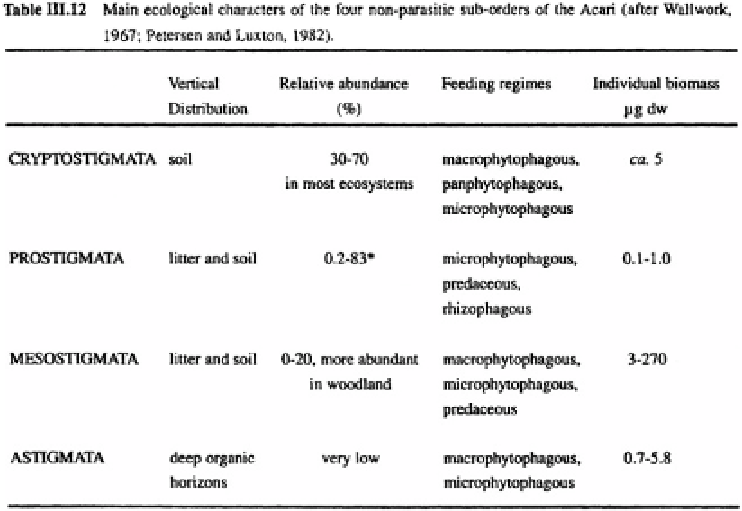Agriculture Reference
In-Depth Information
general ecology (Table III.12). The Metastigmata which are parasitic on vertebrates are
excluded from this discussion.
However, the ecological classification used for Collembola (into epi-, hemi- and euedaph-
ic) may also be used for the Acari (see,
e.g.,
Wallwork, 1967; Cancela da Fonseca, 1987).
The mean size of individuals tends to decrease with depth as the mean pore size diameter
becomes a limiting factor. Epiedaphic Acari tolerate desiccation better than hemi- and
euedaphic forms.
Each of these categories may be further divided into hygrophilous, mesophilous and
xerophilous. This concept of life forms is much more difficult to apply to Acari than
to Collembola. This is because most Acari would be classified as hemiedaphic and,
as such, face rather limited environmental constraints on their morphology.
A classification of Acari among 12 life history groupings has been proposed by
Siepel (1994). It is mainly based on the occurrence of phoresy (obligate, facultative or
absent), feeding habits, demographic parameters (life duration, the type of resting stage
(obligate diapause or quiescence) and type of reproduction (sexual or parthenogenetic).
The relative frequency of each type varies depending on soil and vegetation types.
There are also clear differences in the species present at the various stages of organic
matter decomposition.


